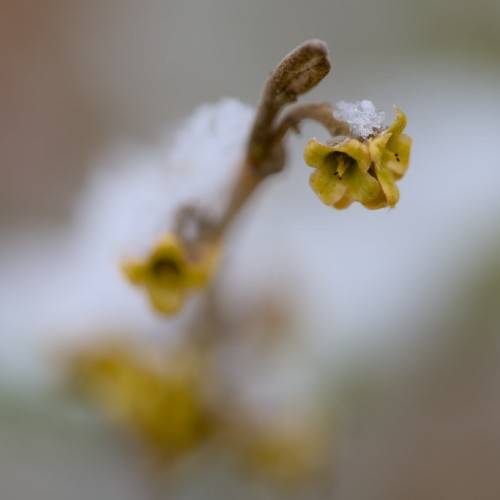
witch hazel
Hamamelis intermedia 'Parasol'
Cycle:
Perennial
Watering:
Average
Hardiness Zone:
5 - 8
Flowers:
Flowers
Sun:
Full sun,part shade
Leaf:
Yes
Growth Rate:
Low
Maintenance:
Low
Care Level:
Medium
watering
Witch hazel should ideally be watered very little, as it is native to dry wooded areas. When watering witch hazel, aim to keep the soil evenly moist but not overly wet. A good rule of thumb for the amount of water to use is to give the plant enough so that the top 5-6 inches of soil feel moist but not saturated. Watering once every 7-10 days is usually sufficient, though the frequency of watering can also vary depending on the weather and conditions. If the weather is particularly hot and dry, then it may be necessary to water a bit more often. In the winter months, when the plant is dormant, watering should be limited to the growing season.
sunlight
Witch hazel (Hamamelis intermedia 'Parasol') is a deciduous shrub that does best in full sun to partial shade. It prefers at least 5 or 6 hours of direct, unfiltered sunlight each day throughout most of the growing season to ensure healthy foliage and abundant flowers. During periods of extreme heat or drought, slight afternoon shade may be beneficial. Too much direct sunlight can cause leaf scorch. To maximize flowering, it should receive full sun during the blooming cycle, which typically begins in late winter.
pruning
For pruning Witch Hazel (Hamamelis intermedia 'Parasol'), generally begin in late winter or early spring. Start by removing any rubbing or crossing branches, as well as any dying or damaged branches. Reduce the height of the plant by cutting back the top of the stems, as well as decreasing the width of the plant by selectively pruning the outer branches. Then focus on removing any shoots or other growth coming from the base of the plant. Lastly, prune back the remaining shoots to create symmetry and neatness, if desired. All cuts should be made just above the budnode, making sure not to remove more than 1-third of the stems.
